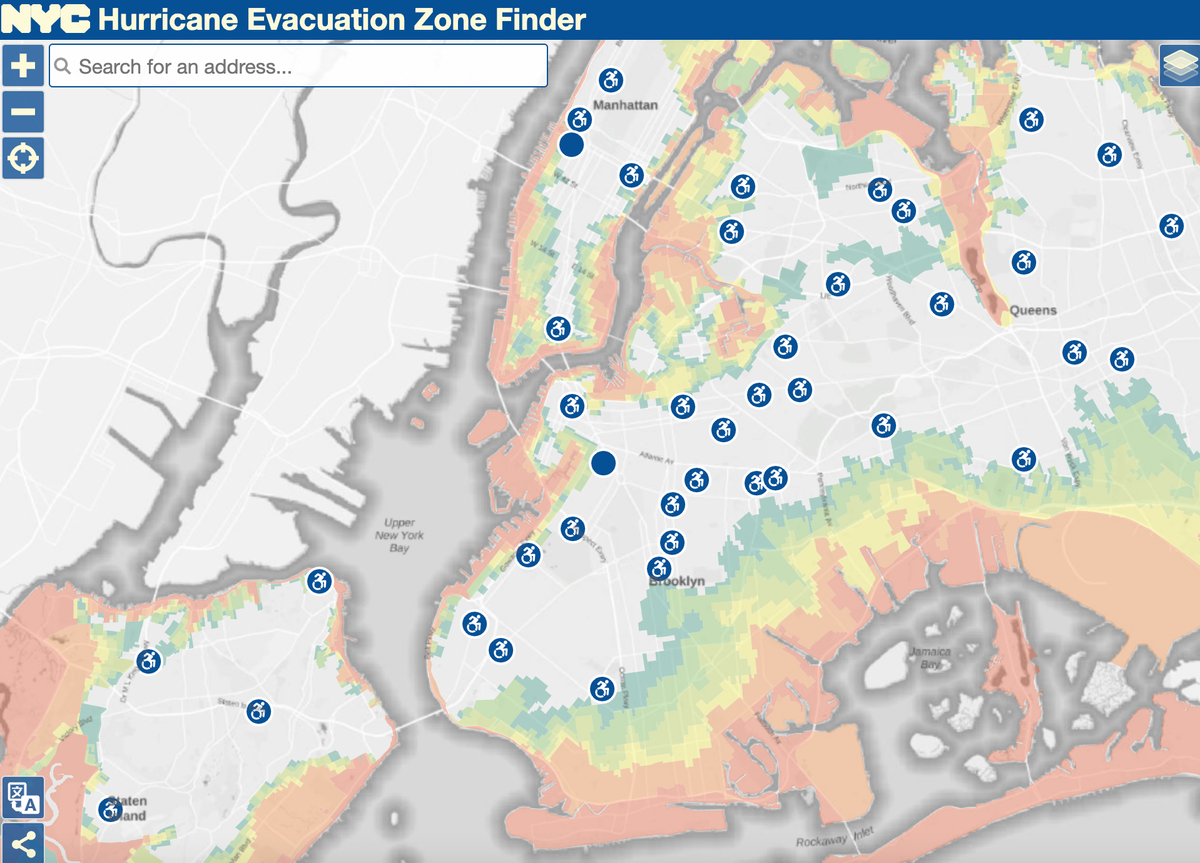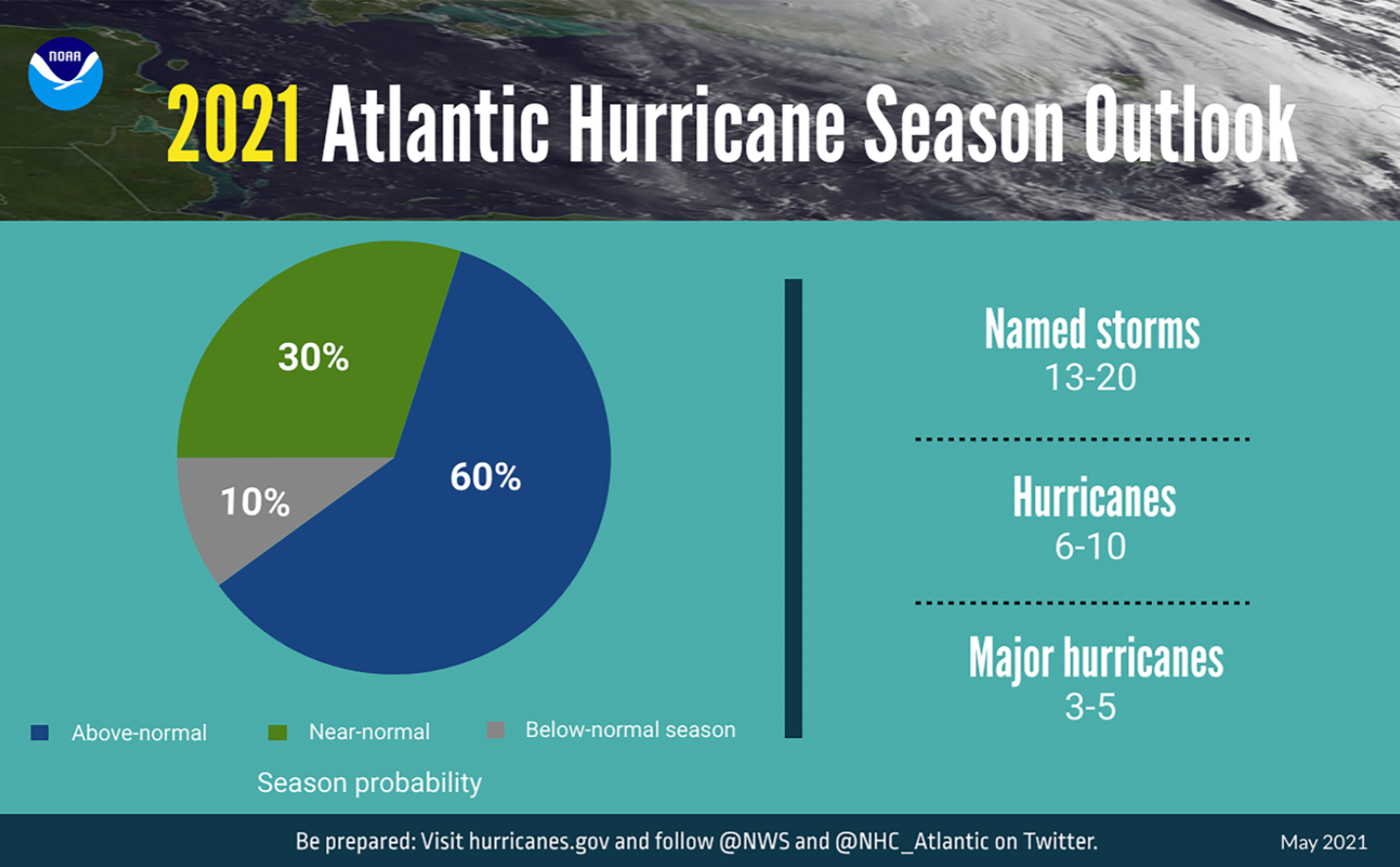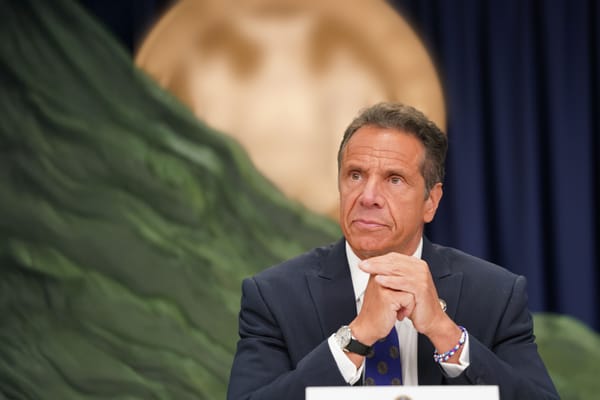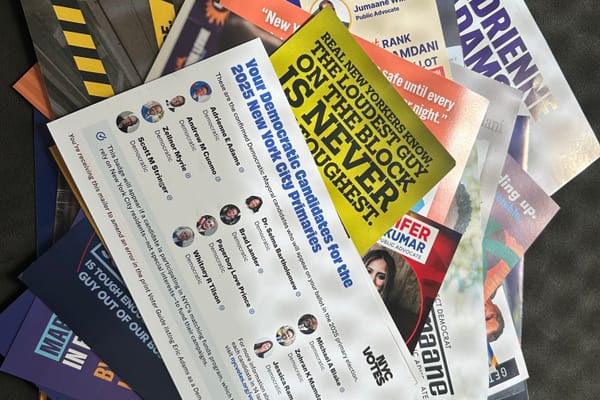It's Hurricane Season, And Evacuation Zones Have Been Changed

June also brings the beginning of the Hurricane season, which runs through the end of November, and this year it is promising to be worse than usual.

Forecasters at the National Oceanic and Atmospheric Administration (NOAA) issued its 2021 Atlantic hurricane season outlook predicting an above-normal season. We are to expect between 13 to 20 named storms with winds over 39 mph, and of these 6 to 10 could become hurricanes (winds of 74 mph or higher). Of those, 3 to 5 could be major hurricanes (category 3, 4 or 5; with winds of 111 mph or higher), NOAA experts inform. A typical season produces 12 named storms, of which six become hurricanes, of which three major hurricanes.
NYC Emergency Management Department (NYC EMD) announced today that the city has changed evacuation zones this year, affecting about one million residents whose zone has changed from last year. All in all, 3.1 million New Yorkers now live in one of the six zones. You can check the new map here, and put in your address to see your number.
There are six hurricane evacuation zones, numbered 1 through 6, and residents who live in these zones may be ordered to evacuate depending on a hurricane’s forecast strength, track, and storm surge, with those in Zone 1 most likely and Zone 6 less likely to have to leave homes.

In the map above, Zone 1 is in red, Zone 6 in in dark green, with the rest in between. What this map also shows you is all the hilly areas of Brooklyn - the reason behind Brooklyn Heights, Crown Heights and Prospect Heights is quite obvious.
The city revised the map based on "new and improved data, as well as information from actual events to allow the City to more accurately define areas most at risk of flooding due to storm surge from a hurricane," NYC EMD informs.
“New Yorkers have been through extraordinary challenges in the past year. Now, it’s on all of us to make sure we’re ready for the next emergency ― and that means having a plan for hurricane season,” said Mayor Bill de Blasio. “Knowing your evacuation zone, preparing for flooding, and checking in on your neighbors and the elderly are easy steps that will make a difference when it matters most. Together, let’s stay safe this season and build a recovery for all of us.”
“New York City is no stranger to coastal storms and hurricanes, and the threat continues to rise,” NYC Emergency Management Commissioner John Scrivani said. “Changes to the hurricane evacuation zones will help New York City be better prepared this hurricane season. I encourage all New Yorkers to visit NYC.gov/knowyourzone or call 311 to take the time now to find their hurricane evacuation zone, understand the hazards they may face, and learn the steps they can take to be ready no matter what the season brings.”
Here's what the experts say we all should do, courtesy of NYC EMD:
MAKE AN EMERGENCY PLAN
Develop a plan with your household members that outlines what to do during an emergency, including a coastal storm. Use Ready New York: My Emergency Plan at NYC.gov/EmergencyManagement. It is available in 13 languages and audio format. For more information, visit NYC.gov/KnowYourZone.
- If you have a disability, access and functional need, make sure your plan addresses how your needs may affect your ability to evacuate, shelter in place, or communicate with emergency workers. Arrange help from family, friends, or service providers if you will need assistance.
- Know your zone. Areas of the city subject to storm surge flooding are divided into six evacuation zones (1 through 6) based on risk of storm surge flooding. Use the Hurricane Evacuation Zone Finder or call 311 (212-639-9675 for Video Relay Service, or TTY: 212-504-4115), to find out if your address is located in an evacuation zone.
- Prepare a Go Bag that you can grab in case you need to leave your home in a hurry. You'll need to customize your Go Bag for your personal needs. All household members should have a Go Bag, including children and pets. Visit NYC.gov/EmergencyManagement for tips on what to pack.
- Stay informed by signing up for Notify NYC to receive emergency notifications. New Yorkers are encouraged to sign up for Notify NYC, the City’s free emergency communications program, for the latest information and updates on emergency events in NYC. To sign up for Notify NYC, download the free mobile application, visit NYC.gov/NotifyNYC, call 311, or follow @NotifyNYC on Twitter.

PREPARE FOR FLOODING
If you live in a flood-susceptible area:
- Keep sandbags, plywood, plastic sheeting, and lumber on hand to help protect your home.
- Make an itemized list of personal property, including furnishings, clothing, and valuables.
- Move valuable items from basements to upper floors. (Basements are vulnerable to flooding.)
- Know your flood risk. Flood zones are used to set flood insurance rates and building regulations. Residents should not use flood zones to determine the need to evacuate during coastal storms. For more information, visit NYC.gov/floodmaps or www.floodhelpny.org.
- Consider getting flood insurance. Protection against loss due to floods is not covered under a homeowner's policy. Contact your property/casualty agent or broker about eligibility for flood insurance. For more information, visit the National Flood Insurance Program online at www.floodsmart.gov.
PREPARE FOR POWER OUTAGES
- Build or restock your emergency supply kit, including a flashlight, batteries, cash, and first aid supplies.
- Charge cell phones and any battery-powered devices.
- Turn your refrigerator and freezer to a colder setting. If you lose power, items that need refrigeration will stay cooler for longer.
- Check on friends, relatives, and neighbors, especially older adults and people with disabilities, access and functional needs, or health conditions. Help them to prepare if needed.
- If you depend on power for life-sustaining equipment, plan to evacuate. You may lose power following a hurricane. Ask your utility company if your medical equipment qualifies you to be listed as a life-sustaining equipment customer.
- If you or anyone in your home depends on electrically-powered life-sustaining medical equipment (such as a ventilator or cardiac device), receives dialysis or has limited mobility, there are specific steps you should take to prepare for a coastal storm.
For more safety tips, visit NYC.gov/EmergencyManagement. New Yorkers are also encouraged to sign up for Notify NYC, the City’s free, official emergency communications program. Sign up for Notify NYC to receive to receive free emergency alerts and updates in your preferred language. Register for free to receive by visiting NYC.gov/NotifyNYC, calling 311 (212-639-9675 for Video Relay Service, or TTY: 212-504-4115), following @NotifyNYC on Twitter, or getting the free Notify NYC mobile application for your Apple or Android device.





